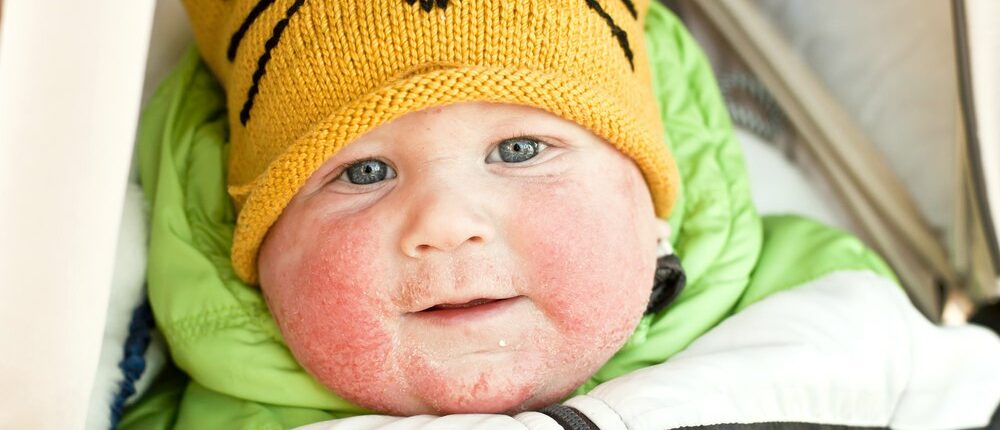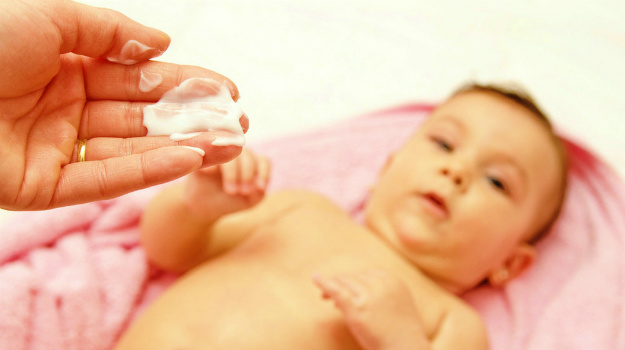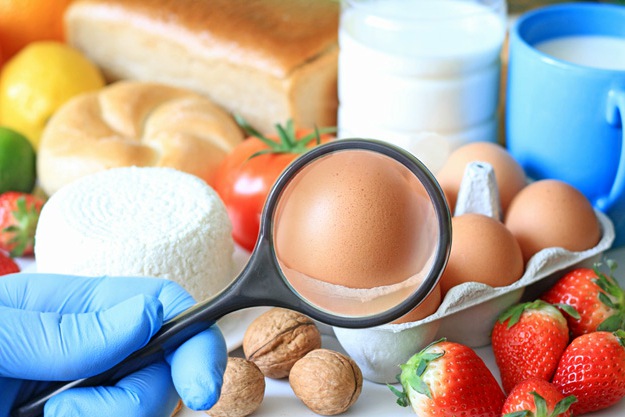

Of all the things you worried about while pregnant, “baby eczema on face” may not have been one of them. Yet the condition is common in infants. While usually not serious, this skin condition can make your baby very uncomfortable. Left untreated, atopic dermatitis can even lead to infection. Reach out to your baby’s pediatrician for a definite diagnosis of this type of eczema. Often, however, the time-tested ways for treating this type of baby rash on sensitive facial skin are still effective.
Why Do Some Babies Get Eczema On Face?
In this article:
- What Is Eczema?
- Provide Moisture — But the Right Kind
- Soothing Baths
- Avoid Irritants
- Explore Food Allergies
- Remove Her Temptation to Scratch
What Is Eczema?
Eczema is also known as atopic dermatitis. The inclusion of the medical term “atopic” means that a child can inherit a tendency toward chronic health conditions. Usually, some family history of asthma, hay fever, and skin rashes may make a child prone to developing eczema. This doesn’t mean a family history with these medical conditions is necessary for your child to develop eczema — any child can develop this skin condition. Additionally, an environmental exposure may trigger the rash, causing a predisposition towards having a reaction in the future.
That doesn’t mean your baby will constantly have a rash and suffer from itching on her face. What it does mean is that certain situations can cause flare-ups. Overly damp or overly dry environments can make already dry skin patches turn red and itchy. The same holds true for food allergies and irritants in clothing, bathing products, and products like rug and furniture shampoos.
According to the National Eczema Association, babies under the age of six months most commonly develop eczema on the face and scalp area. Later, toddlers may develop eczema patches around their mouth and eyelids. But for the most part, it’s younger babies who run an increased risk of developing eczema on the face. Older babies generally develop irritation on their elbows or knees — a sign that crawling has begun!
Provide Moisture — But the Right Kind

It can seem contradictory, it’s important to remember that eczema responds well to moisturizing creams, but not to overly moist atmospheres. Damp conditions that trap sweat and dirt on your baby’s face can make the condition even worse.
Pat your baby’s face dry after a bath, as well as when she sweats. Change her out of her bundled-up clothes once you’re home (even if she fell asleep in the car and it’s tempting to just let her keep napping!). It’s also important to remember that babies tend to drool quite a bit, so keep that clean cloth handy to prevent saliva from lingering on her chin — or get spread around her face after a “slobbery” meal!
Moisturizing creams provide a layer of protection that prevents water evaporation. This helps your baby avoid the overly dry skin that can lead to eczema. Use a mild cream or ointment several times a day. Make sure it doesn’t have additives or perfumes, which can cause eczema flare-ups.
Ask your doctor whether the product you use should have special ingredients. In some cases, the doctor may recommend one with ceramides, which is a type of lipid molecule with superior water retention skills. On the other hand, your baby may respond best to a cream made with naturally hydrating and soothing ingredients like aloe vera, shea butter, and avocado oil. Re-apply the cream often.
Soothing Baths
Baths can be healing for your baby if she has a rash elsewhere on her body. Finely-ground oatmeal is especially soothing for red, itchy skin. Make sure not to use soap on baby’s face, which dries out the sensitive skin. Plain water will do. Pat your baby dry with a clean towel and avoid using a rubbing motion.
Of course, you’ll want to add more cream to soothe the baby eczema on face after her bath. In fact, it can’t be stressed often enough that babies suffering from atopic dermatitis need generous amounts of cream or ointment with each application. These healing creams should be re-applied often.
Avoid Irritants
Babies tend to rub their faces with their sleeves, fall asleep on your shoulder, creep around the floor, and contort themselves into unpredictable positions. That’s why it is always important to pay attention to the clothing, blankets, and flooring with which they come into contact. Use mild, unscented laundry detergent and household cleaning products. Clothing for your baby, along with those who routinely hold her, should be made with natural, non-scratchy fabrics.
Dry winter air can also be an irritant that causes eczema flare-ups in babies. To combat that, invest in a cool-mist vaporizer in rooms where your baby spends a lot of time. These appliances add moisture to the room but don’t emit dangerous hot steam. Even with a cool-mist vaporizer, care should be taken to keep the unit, and any cords, out of reach.
Explore Food Allergies

Food allergies sometimes trigger eczema on baby’s sensitive skin — especially the face. If your baby has recently transitioned into eating solid food, one of those newer ingredients may be causing the problem. Talk to your doctor about whether it’s safe to eliminate these foods.
Breastfeeding has been linked to better resistance to allergies and illness in infants. If you nurse, consider doing it exclusively rather than switching over to formula. But if you use formula, discuss with your pediatrician whether a change in the formula type you feed your baby might help.
Remove Her Temptation to Scratch
Your doctor has probably told you that eczema worsens through scratching and irritation. Babies can even get infections if their nails pierce their facial skin. This action opens the door to bacteria. Of course, you can’t exactly explain these dangers to your baby. The best you can do is restrict her ability to scratch herself.
Putting baby socks on her hands, especially during crib time, is one tried-and-true method. Use socks long enough to tuck into her sleeves. If it’s too hot for long sleeves and socks, purchase no-scratch mittens from a baby store or an online source. Made with elastic at the wristbands, they don’t easily slip off. Of course, babies can be tricky! That’s why it’s important to keep your baby’s nails trimmed. If she does escape her mittens, the damage she can do to her face is limited with shorter nails.
Treat baby eczema on face naturally with more tips from a mother dealing with the same issue, Telia JnBaptiste:
https://youtu.be/8FtwSSA90Vg
If your baby’s pediatrician believes more aggressive treatment is needed, you’ll probably be given a recommendation for an OTC or prescription hydrocortisone cream. The medicine may be worth trying if your baby is so miserable because of her skin condition that she is eating and sleeping poorly. But don’t skip to these solutions unless the doctor recommends it. Often, natural products and home treatments can go a long way toward helping your baby recover from her atopic dermatitis — and that will help both of you rest easier!
What treatments for baby eczema on the face have you tried at home? Share your own tips in the comments section below!
Up Next: 7 Tips to Make Your Home Eczema-Friendly
